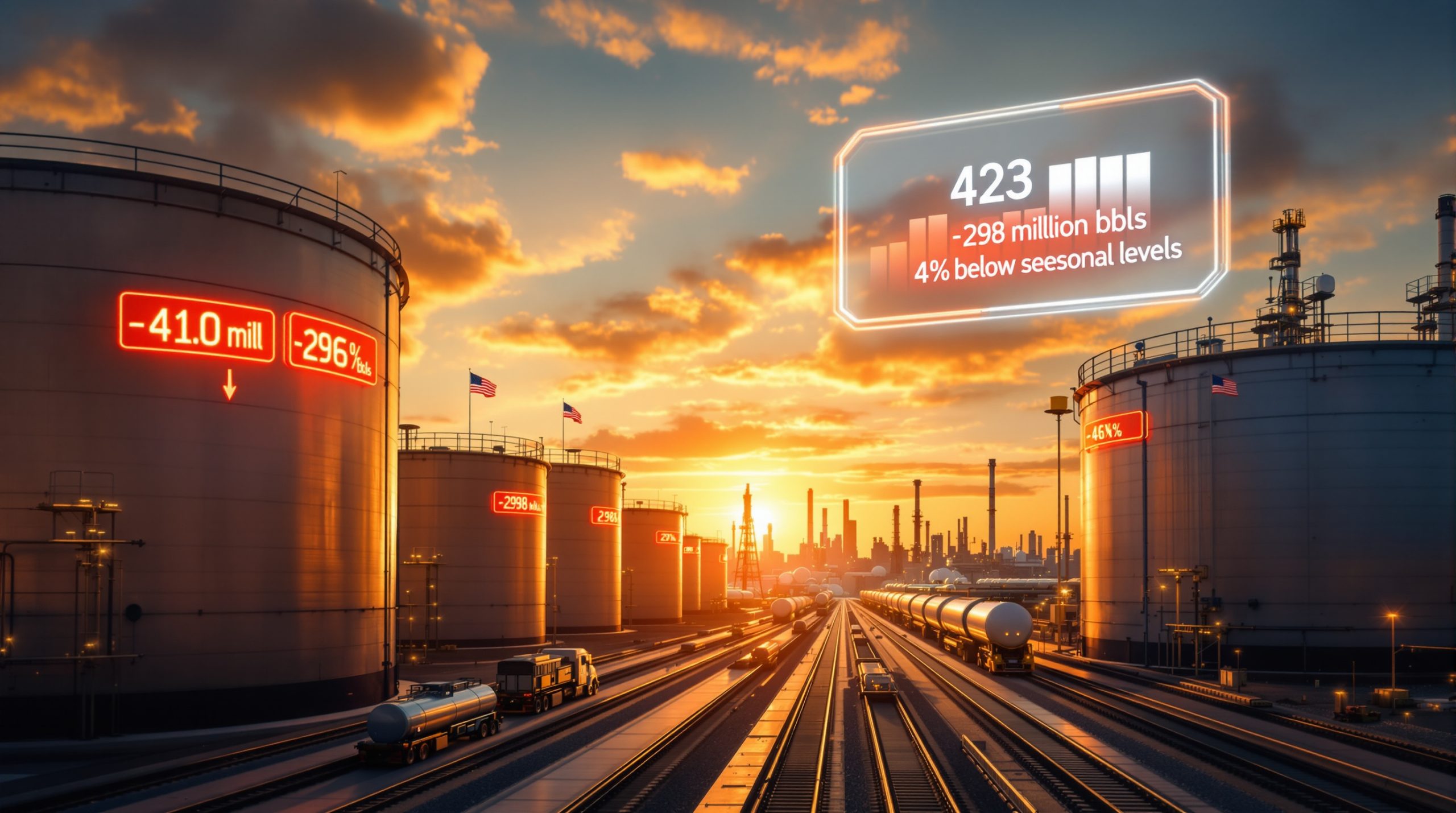What Drove Sweden's Decision to Lift Its Uranium Mining Ban?
Sweden's decision to lift its uranium mining ban marks a significant policy shift driven by strategic energy concerns. The center-right coalition government that took power in late 2022 has been working to reverse the moratorium implemented in 2018, with the ban officially scheduled to be lifted on January 1, 2026.
The primary motivation stems from Sweden's renewed commitment to nuclear energy as part of its low-carbon transition strategy. According to the World Nuclear Association, Sweden currently derives approximately 25 TWh per year from nuclear power, representing about 20% of the country's electricity needs. This policy reversal acknowledges the strategic importance of securing domestic uranium supplies rather than remaining entirely dependent on imports.
The current government has identified that treating uranium already mined as a byproduct as waste rather than as a valuable resource created an unnecessary obstacle to Sweden's energy security goals. This recognition comes amid growing concerns about global uranium market dynamics and resource independence.
Following a comprehensive government inquiry and subsequent legal review, companies will soon be able to apply for uranium exploration and processing permits under frameworks similar to those governing other minerals, creating new opportunities for resource development.
How Does This Change Align With Sweden's Nuclear Energy Strategy?
Expanding Nuclear Capacity
Sweden's decision to lift the uranium mining ban directly supports its broader nuclear energy expansion plans. The World Nuclear Association notes that Sweden currently operates "six reactors with a total capacity of about 6.9 GWe" producing approximately 47 TWh annually as of 2023 data.
This nuclear expansion strategy represents a notable reversal from previous policies that had sought to phase out nuclear power. The current government views nuclear energy as essential to meeting Sweden's growing electricity demands while simultaneously achieving climate goals.
The International Energy Agency emphasizes that "nuclear power provides a significant share of low-carbon electricity in several countries" and highlights its crucial role in achieving net-zero emissions targets.
Reducing Import Dependence
Currently, Sweden imports 100% of its uranium fuel requirements, primarily from major global suppliers. According to World Nuclear Association data, global uranium production is dominated by Kazakhstan (39% of global production), Canada (15%), and Australia (12%), creating a dependency on distant supply sources.
By developing domestic uranium resources, Sweden aims to:
- Decrease dependence on imported uranium
- Mitigate supply risks associated with geopolitical tensions
- Create a more resilient energy system
- Support European efforts to reduce critical mineral dependencies
The European Commission's Critical Raw Materials Act identifies uranium as strategically important for EU energy security and decarbonization objectives, further supporting Sweden's policy shift.
What Uranium Resources Does Sweden Possess?
The Viken Deposit
Sweden's uranium potential is highlighted by the Viken deposit, which represents one of the largest undeveloped uranium resources globally. This significant deposit spans approximately 4 km wide by 6 km long and possesses several notable characteristics:
- It exists within alum shale formations that extend across parts of Sweden
- The deposit formed in a low-oxygen marine environment where sedimentary rock "acted as a sponge and sucked up all the metals"
- It contains uranium alongside valuable metals including vanadium, molybdenum, nickel, zinc, and copper
- It also contains potentially recoverable potash and phosphate, critical for agricultural applications
- The deposit is relatively shallow and flat-lying, potentially allowing for simpler mining operations
The polymetallic nature of the Viken deposit means that uranium extraction could potentially be accompanied by the recovery of other valuable metals and minerals, creating a more comprehensive resource development opportunity.
Additional Uranium Occurrences
Beyond the Viken deposit, Sweden has several other uranium occurrences that have been identified through historical exploration efforts. These include:
- Higher-grade uranium properties that differ from the alum shale type deposits
- Historical drill results from exploration campaigns conducted in the 1970s and 1980s
- Areas with historical resource estimates that could be reassessed using modern methodologies
These additional uranium occurrences provide further potential for domestic uranium production beyond the flagship Viken deposit, though they remain at earlier stages of assessment.
What Mining Approaches Are Being Considered?
Open-Pit Mining Potential
The geological characteristics of Sweden's uranium deposits, particularly the alum shale formations, lend themselves to potential open-pit mining approaches. This mining method offers several advantages:
- Lower operational complexity compared to underground mining
- Potentially lower operating costs for near-surface deposits
- Ability to access larger volumes of mineralized material
- Possibility for hybrid approaches combining open-pit with strip mining techniques
Industry experts contrast this with high-grade uranium deposits in Canada's Athabasca Basin, which require complex mining methods including freezing ground at depths of 800 meters and using robotic mining due to extremely high grades (sometimes reaching 80-90% uranium).
Companies exploring these deposits are considering focused mining scenarios that target optimal areas with production estimates of "50 to 100 million tons to be mined over 10 to 12 years" rather than attempting to extract the entire resource. This selective approach aims to balance economic considerations with environmental and social factors.
Environmental Considerations
Any future uranium mining operations in Sweden will need to address important environmental considerations. Potential approaches being discussed include:
- Dry-stack tailings management to minimize environmental impacts
- Progressive land reclamation during mining operations
- Selection of mining locations that minimize impacts on agricultural lands and communities
- Careful water management and monitoring systems
Industry approaches focus on "open pit hybrid with strip mining, dry stack tailings so that you're reclaiming the land as you're advancing on one face," indicating a commitment to progressive rehabilitation techniques that would minimize long-term environmental impacts.
What Technical Challenges Must Be Addressed?
Metallurgical Processing Complexity
One of the key technical challenges for developing Sweden's uranium resources relates to metallurgical processing. The alum shale deposits contain multiple metals in a fine-grained sedimentary rock, which creates processing complexities:
- Previous metallurgical work during the 2004-2008 uranium cycle encountered difficulties, particularly with bio-leach processing methods
- Recovery of multiple metals requires careful optimization of processing methods
- Achieving acceptable recovery rates for uranium and other metals simultaneously presents technical challenges
- Processing approaches must balance recovery rates with environmental considerations
More recent metallurgical testing by companies working in the region has shown improvements over historical methods, with better potential for recovering both uranium and valuable by-products like vanadium, suggesting technical progress in addressing these challenges.
Resource Delineation
Another technical challenge involves accurately delineating the resources to identify optimal mining locations. Companies are employing advanced technologies to address this challenge:
- Geophysical surveys using Mobile Magnetotelluric (MT) methods to map the thickness and depth of alum shale formations
- Integration of historical drilling data with modern interpretative techniques
- Selective drilling programs to confirm and expand resource understanding
- Prioritization of areas with favorable characteristics for initial development
Due to the excellent geological continuity of the alum shale formations, an inferred resource estimate can be established with relatively wide drill spacing (approximately 300 meters), meaning that a significant resource can potentially be delineated with a limited number of drill holes.
How Might This Impact Sweden's Position in the European Energy Landscape?
Strategic Resource Provider
Sweden's potential emergence as a uranium producer could significantly alter its position in the European energy landscape. According to the European Commission's Euratom Supply Agency, the EU imported approximately 20,000 tonnes of natural uranium in 2022, with major suppliers being Kazakhstan (25%), Niger (25%), and Canada (21%).
As one of the few European countries with substantial uranium resources, Sweden could become:
- A strategic supplier of uranium within the European Union
- A contributor to European energy security and resource independence
- A model for responsible development of critical minerals within the EU
- A more self-sufficient nuclear energy producer
This position would align with broader EU efforts to reduce dependence on imported critical minerals and develop more resilient supply chains for strategic resources.
Nuclear Technology Leadership
Beyond uranium production, Sweden's renewed commitment to nuclear energy could strengthen its position as a leader in nuclear technology and expertise:
- Supporting innovation in nuclear reactor technologies
- Developing expertise in the full nuclear fuel cycle
- Contributing to European nuclear research and development
- Potentially exporting nuclear knowledge and technology
This leadership role could extend Sweden's influence in European energy policy discussions and reinforce its commitment to low-carbon energy solutions.
What Are the Economic Implications of Uranium Mining in Sweden?
Job Creation and Regional Development
The development of uranium mining operations in Sweden would likely generate significant economic benefits, particularly in regions where the deposits are located:
- Creation of direct mining and processing jobs
- Development of supporting industries and services
- Skills development in specialized mining and processing techniques
- Regional economic diversification and growth
These economic benefits could be particularly valuable for rural areas seeking new economic opportunities and development pathways.
Value-Added Processing Potential
Beyond the direct extraction of uranium, there's potential for developing value-added processing capabilities that could enhance the economic impact:
- Processing of uranium into nuclear fuel components
- Recovery and processing of by-products such as vanadium and rare earth elements
- Development of specialized metallurgical expertise and facilities
- Integration with Sweden's existing industrial base
The polymetallic nature of the deposits creates opportunities for multiple revenue streams, potentially including agricultural products like potash. This is particularly significant as "there's no source in Northern Europe" for potash, which is typically imported from countries like Israel, creating an opportunity for domestic production of this critical agricultural input.
What Social and Environmental Considerations Must Be Addressed?
Community Engagement and Social License
Successful development of uranium resources in Sweden will require effective community engagement and earning social license to operate. Key considerations include:
- Transparent communication with local communities about project plans and impacts
- Addressing concerns related to uranium mining and processing
- Balancing development with protection of existing land uses
- Recognizing that "anytime you're talking about a potential open pit mine, you're going to get land owners that say, 'Not in my backyard'"
Companies exploring these resources are already working to identify areas where community support may be stronger, such as focusing on woodland areas rather than agricultural lands where possible.
Environmental Protection Standards
Sweden's strong environmental protection framework will necessitate rigorous environmental management for any uranium mining operations:
- Comprehensive environmental impact assessments
- Strict water quality monitoring and protection measures
- Progressive rehabilitation of disturbed areas
- Responsible waste management practices
Meeting these high environmental standards will be essential for gaining regulatory approvals and maintaining public support for uranium development.
What Timeline Can Be Expected for Uranium Development?
Regulatory Implementation
The lifting of the uranium mining ban on January 1, 2026, represents just the first step in a longer development timeline:
- Following the ban lift, companies will need to apply for exploration and mining permits
- Regulatory frameworks will need to be updated to specifically address uranium mining
- Environmental assessment processes will need to be completed
- Public consultation periods will be required as part of the permitting process
These regulatory steps mean that actual uranium production would still be several years away even after the ban is formally lifted.
Project Development Stages
Companies looking to develop uranium resources will need to progress through several development stages:
- Resource definition and expansion through drilling programs
- Preliminary economic assessments to evaluate development potential
- Pre-feasibility and feasibility studies to confirm economic viability
- Detailed engineering and construction planning
- Financing and investment decisions
- Construction and commissioning
Preliminary assessment timelines range from 6 months (using existing resource estimates) to 12 months (requiring new resource definition), followed by typical project development phases that could span 5-10 years from the lifting of the ban before commercial production might begin.
How Does This Policy Shift Reflect Broader Energy Trends?
Nuclear Renaissance
Sweden's decision to lift its uranium mining ban reflects a broader nuclear renaissance occurring in many countries. According to the World Nuclear Association, there are "over 60 reactors under construction worldwide" as of 2024, demonstrating growing global commitment to nuclear energy.
The International Energy Agency emphasizes nuclear power's role in achieving net-zero emissions, stating that nuclear capacity needs to double by 2050 to meet climate targets. Sweden's approach aligns with this growing recognition of nuclear power's role in:
- Addressing climate change through low-carbon electricity generation
- Providing reliable baseload power to complement intermittent renewable sources
- Supporting grid stability and energy security
- Enabling broader electrification of economies
This shift aligns Sweden with other countries like France, the UK, and several Eastern European nations that are reconsidering or expanding their nuclear energy programs as part of their energy transition strategies.
Critical Minerals Strategy
The move also reflects the growing importance of critical minerals strategies in national policy:
- Recognition of uranium as a strategic resource for energy security
- Growing competition for critical minerals globally
- Desire to reduce dependence on imports from potentially unstable regions
- Integration of resource development with broader industrial policies
This approach extends beyond uranium to include other critical materials found in the same deposits, including rare earth elements—90% of which currently come from China—highlighting the strategic value of developing domestic sources of these materials.
What Are the Implications for Global Uranium Markets?
Supply Diversification
Sweden's potential emergence as a uranium producer would contribute to global uranium supply diversification. According to the World Nuclear Association, global uranium production was approximately 49,355 tonnes U in 2023, with Kazakhstan producing 43% of global supply.
Sweden's entry into production would have several market implications:
- Adding a new producer in a politically stable jurisdiction
- Reducing concentration of production in a small number of countries
- Potentially increasing competition among suppliers
- Adding a new source in the European market specifically
While Swedish production would likely represent a small percentage of global supply initially, its strategic importance could exceed its volume contribution, especially considering recent events like the Paladin uranium halt in Namibia that highlight supply vulnerabilities.
Long-Term Market Signals
The policy shift sends important signals to global uranium markets about long-term demand:
- Reinforcing expectations of growing nuclear energy deployment
- Supporting investment in uranium exploration and development
- Demonstrating political commitment to nuclear energy's future
- Potentially encouraging other countries to reassess their uranium policies
These market signals could contribute to greater confidence in uranium's long-term demand outlook, potentially supporting investment in new production capacity globally and providing context for measures like the US Senate uranium ban on Russian imports.
Additional Considerations for Sweden's Uranium Development
Rare Earth Element Potential
An often-overlooked aspect of Sweden's alum shale deposits is their potential to contain significant rare earth elements. The development of these resources could provide Europe with a domestic source of these critical materials, reducing dependence on Chinese supplies that currently dominate global production.
Future exploration work will need to include comprehensive analysis for the full spectrum of rare earth elements, which was not included in historical analytical methods used during previous exploration campaigns.
Geophysical Innovation
Recent technological advances in geophysical surveying, particularly Mobile Magnetotelluric (MT) methods, have enabled more efficient mapping of alum shale deposits without extensive drilling. This innovation allows companies to:
- Precisely map the thickness and depth of potential uranium-bearing formations
- Prioritize areas for detailed evaluation
- Reduce exploration costs
- Minimize environmental impact during the exploration phase
These advanced survey methods provide crucial data for selecting optimal development locations based on depth to alum shale, thickness of mineralized zones, and social license considerations, similar to techniques being applied at the Patterson Corridor project in Canada.
Processing Innovation Opportunities
The complex nature of the polymetallic alum shale deposits presents both challenges and opportunities for processing innovation. Development of effective extraction methods could lead to breakthroughs applicable to similar deposits globally, potentially creating intellectual property value beyond the direct resource extraction.
The potential for producing multiple commodities from a single operation creates possibilities for cost-sharing across different product streams, potentially improving overall project economics compared to single-commodity operations. These innovations could complement advances in US ISR uranium production techniques being developed elsewhere.
Disclaimer: The uranium mining industry and nuclear energy sector involve complex regulatory, environmental, and market considerations. Future developments will depend on multiple factors including technological advances, market conditions, regulatory approvals, and social acceptance. This article presents current information and analysis, but actual outcomes may differ from expectations.
Want to Invest in the Next Major Mineral Discovery?
Discovery Alert's proprietary Discovery IQ model instantly notifies investors of significant ASX mineral discoveries, turning complex data into actionable insights. Understand why historic discoveries can generate substantial returns by exploring Discovery Alert's dedicated discoveries page and begin your 30-day free trial today to position yourself ahead of the market.




